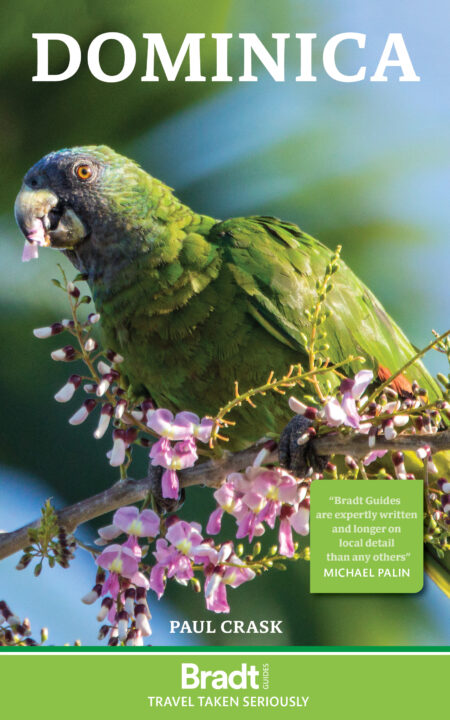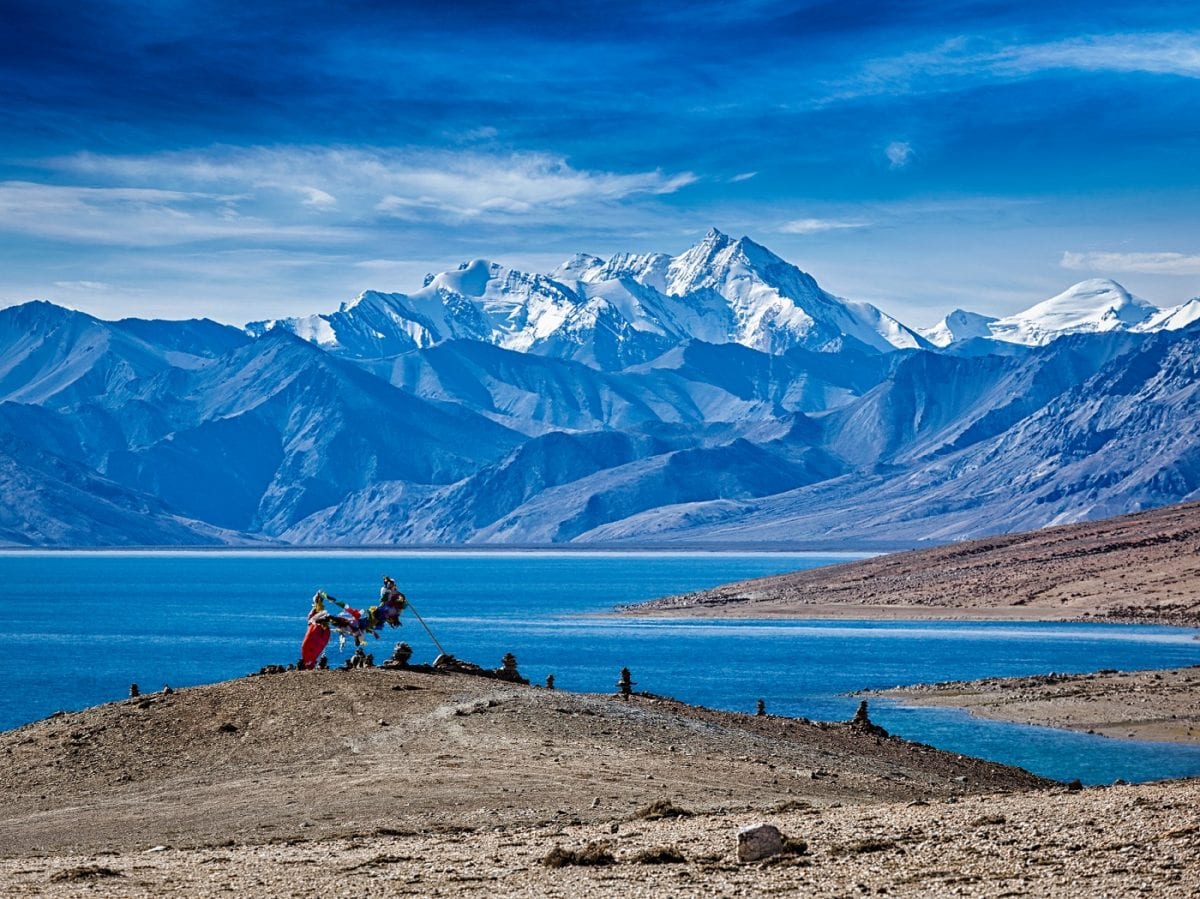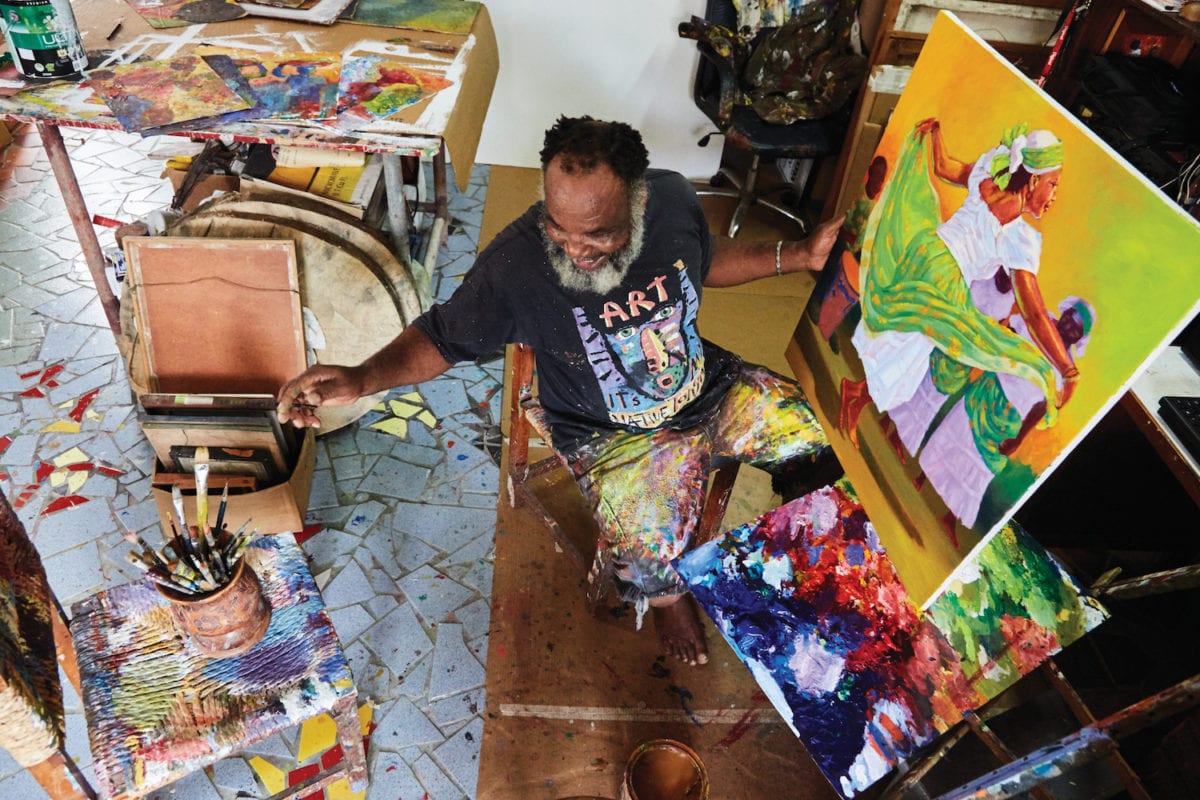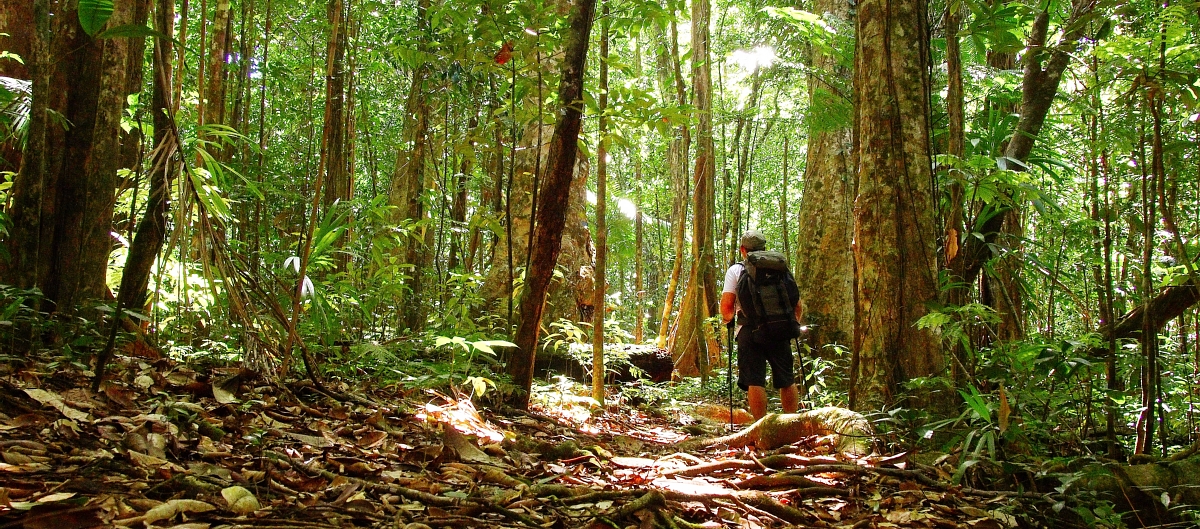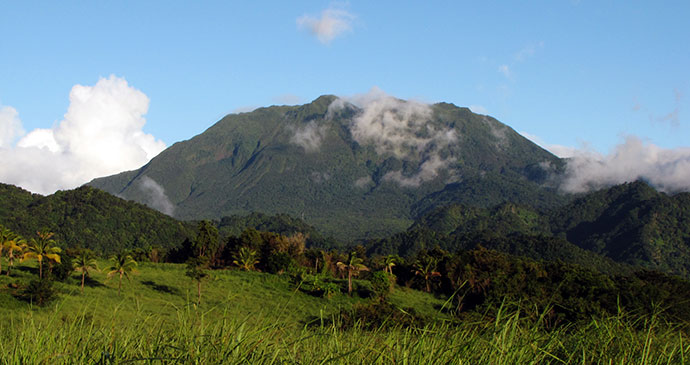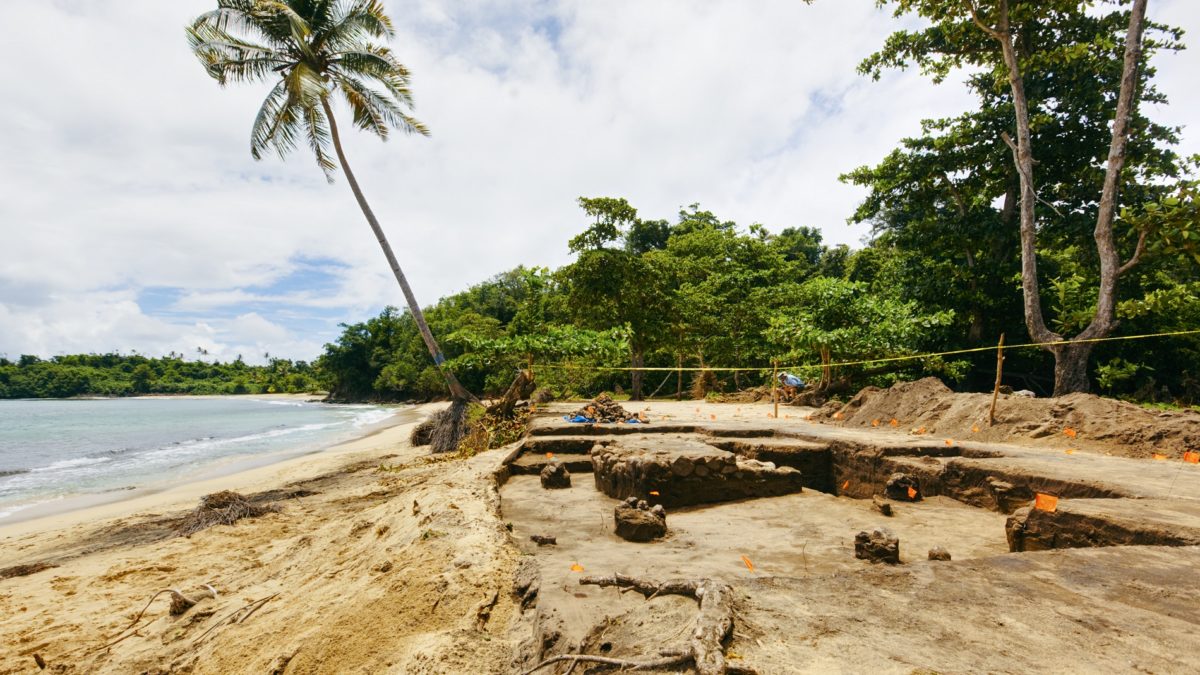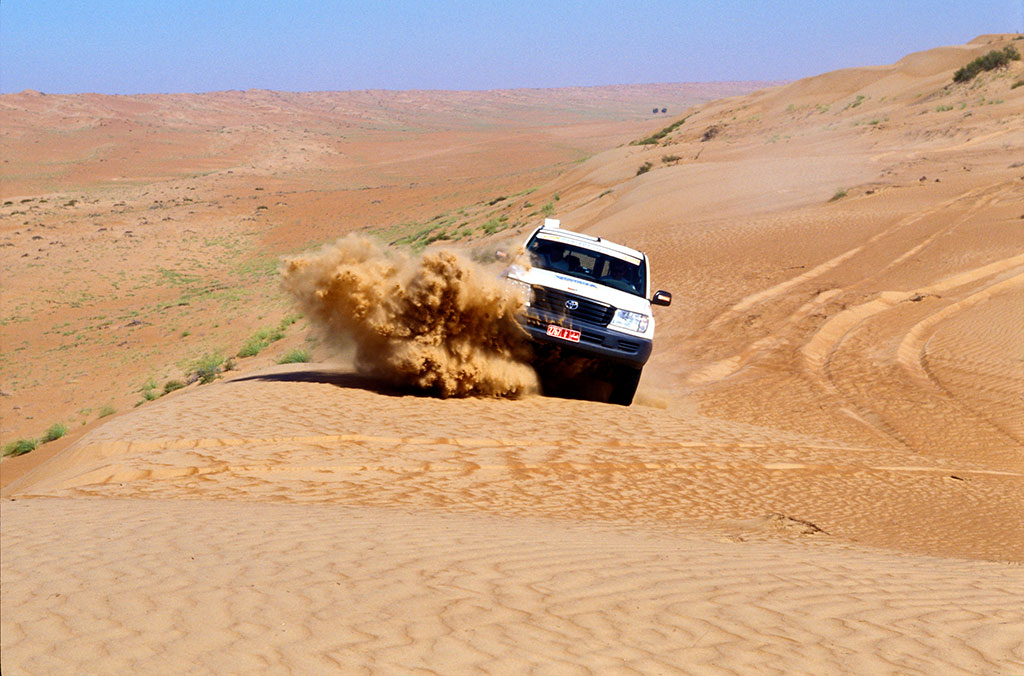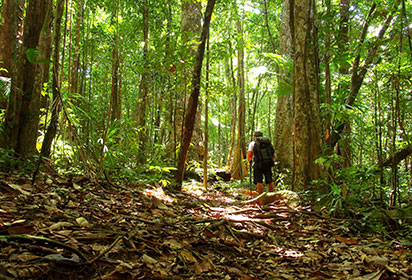Dominica offers you an unforgettable holiday as well as an opportunity to make a positive difference to people in a very direct way.
Paul Crask author of Dominica: The Bradt Guide
Dominica is a Caribbean island with a difference; an off-the-beaten track destination for adventure travellers and nature-lovers. While there are gorgeous beaches, a selection of luxury hotels and eco-cottages, most people holiday here to explore the island’s vast swathes of pristine rainforest, to climb its numerous volcanoes, to hike to waterfalls and crater lakes – one of them boiling hot – to get dirty and sweaty, and to feel alive.
Hiking trails are absolutely everywhere, and the 200km 14-stage Wai’tukubuli National Trail has no equal in this region. The Morne Trois Pitons National Park, one of several protected nature reserves, is a UNESCO World Heritage Site, and the unique semi-autonomous Kalinago Territory is home to descendants of the eastern Caribbean’s original Amerindian people.
Underwater, the sheer drop-offs, clear waters and dramatic reef formations of the Soufriere Scotts Head Marine Reserve make for excellent scuba diving and the island’s rivers, hot sulphur spas and wellness therapists offer travellers a chance to unwind and recharge.
A friend here once told me ‘man was made to move’, and Dominica offers you a chance to do just that. This island is about life; it is raw, full-on, natural and so far very unspoilt. Each morning it greets you with bird song and a smile, and then challenges you to get up close and personal with the natural environment, with the peace and serenity of wilderness, and with your own sense of spirit, courage and adventure.
Food and drink on Dominica
When the Amerindians arrived in Dominica it was a combination of seafood and cassava that formed the basis of their diet. As agricultural practices developed on the island, root crops such as yams, sweet potatoes and tannias were cultivated for food.
West African slaves working the coffee and sugar plantations tended to have a staple diet of root crops, or provisions, which they spiced up with seasonings such as peppers, bay leaves, parsley and thyme, adopting the influences of the French.
Following the abolition of slavery, these Caribbean Creole culinary practices continued to develop, particularly with the arrival of freed slaves from the French islands, and are the foundation for the local traditional dishes served in many of Dominica’s snackettes and Creole restaurants today.
Lunch
Sometimes it seems that Dominicans would not be able to survive the day without having their lunch. Despite busy lifestyles and the influence of fast foods, almost everything comes to a standstill for what many Dominicans continue to regard as the main meal of the day. In local eateries a menu board may simply say ‘fish lunch’ or ‘chicken lunch’ and typically it will consist of a main ingredient, such as fish or chicken, with a fairly standard selection of rice, red beans and boiled ground provisions.
This term refers to any one or a collection of root crops such as varieties of yam, eddoe, dasheen, sweet potato or tannia. The term is occasionally stretched to include breadfruit, plantain, and green bananas (rather confusingly known as figs), though purists will contest this inclusion.
Local dishes
There are many traditional dishes for you to try. Perhaps one of the oldest and most basic is the one-pot dish, or braf. One-pot cooking simply means placing all the ingredients you have, whatever they may be, in one large pot, cooking them up in water and seasoning to create a nutritious broth.
This dish tends to be eaten in homes rather than in restaurants, though some local eateries do serve it, especially on Friday nights (fish braf) and Saturday mornings (pig and cow’s foot braf). Try Miranda’s on the Imperial Road in Springfield.
Most local dishes are rich in vegetables and seasonings. You may find meat and seafood dishes in some local eateries a little overcooked. This is a legacy of the past, and a lack of proper refrigeration.
The Dominican palate has become accustomed to eating meat dishes in this way. Larger restaurants are more likely to cook meat and seafood in a more international manner, though you should always check when ordering.
Hot pepper sauce, made from scotch bonnet peppers, is used to spice up dishes. Be very careful with it though: just a few drops can completely transform a dish, and maybe not in the way you want!#
Calalou dasheen leaves (a ground provision), and occasionally spinach. It is a thick green soup that is often served with crab. It is delicious and usually a speciality on restaurant menus during the Creole season. Other popular soup dishes are pumpkin soup, goat water, which is a goat meat stew, and chatou water, a soup made with octopus.
Sancoche is a traditional dish made from coconut milk, provisions and usually codfish. Ackra is a kind of seasoned and fried fritter, often made from codfish, breadfruit, tannia and, from September to November, in the days after the moon’s last quarter, titiwi, which is a juvenile goby caught in fine nets at the mouths of rivers. In September each year the west coast village of Layou hosts the Titiwi Fest where, along with music, river and beach activities, you can sample a wide variety of titiwi dishes. Crab backs are a delicious savoury dish and are also available during the Creole season.
The land crab’s flesh is mixed with a secret combination of spices and seasonings and then stuffed back into the shell, sprinkled with breadcrumbs and baked in a hot oven. Curried goat is a popular spicy meat dish (and yes, it is goat), usually served with rice, and, when in season, stewed agouti is another local delicacy. A common staple is a heavily seasoned rice dish called pelau, usually a lunch dish served as chicken pelau.
Vegetarians should have few problems finding good food in Dominica. With a preponderance of fresh fruit and vegetables, the choice is varied. Tannia ackra, rice and peas, fried plantain, breadfruit puffs, provisions, vegetable sancoche and macaroni cheese are all staple foods and very common dishes.
You may also come across the term ital. This is a term commonly used by Rastafarians to mean wholesome, natural food. It is always vegetarian. If you happen to hear the distinctive sound of a conch shell being blown then it means a fisherman is selling his catch. The fish caught locally and used in Dominican cooking will typically include tuna, marlin, flying fish, jacks, snapper and dorado (mahi mahi), also known locally as dowad or dolphin.
Popular roadside snacks include bakes, a fried flour and water dough that is usually stuffed with seasoned saltfish, tuna or cheese. You will also see people selling fried or barbecue chicken, corn and plantain. A filling snack is roti, a flat bread most commonly stuffed with either curried vegetables or chicken. It is a very inexpensive dish that is very filling and great if you are on a tight budget.
Local drinks
Non-alcoholic
Freshly made juices are always available, the selection being determined by season and what is ripening. Lime squash and freshly made ginger beer are particularly refreshing drinks on hot days. Passionfruit, pineapple, orange and grapefruit juices are also commonly served.
Sorrel, known in some parts of the Caribbean as hibiscus tea, is a delicious drink, usually available around the festive season. It is made from the sepals of the sorrel flower (Hibiscus Sabdariffa) and is fruity and fragrant. It is also served as a warm, spiced tea or as a wine, and tastes rather like a European Christmas mulled wine.
Coconut water extracted from unripe jelly coconuts is an acquired taste, though it is very refreshing, especially direct from a coconut. Always drink coconut water and/or fresh fruit juice in moderation. Too much may have the effect of a laxative.
When thirsty, drink water. Tap water is usually clean and safe to drink, though after heavy rains it may become dirty for a short period and so should be avoided. Usually the water supply is temporarily suspended if it has been contaminated with dirt.
Alcoholic
Dominica has two main rum distilleries. The Belfast Estate produces Soca rum, Red Cap rum and Bois Bandé rum, and the Macoucheri Estate produces dark and light Macoucheri rum which is distilled from sugarcane grown on its own grounds.
Dominicans will decant rums from these distilleries into bottles as a basis for their own individual blends of rum punch and bush rum, the latter being white cask rum with an infusion of herbs, spices or tree bark.
One of the island’s most famous blends of bush rum is bois bandé which is said to have a tumescent effect upon male drinkers. Locals will often refer to it as a ‘natural Viagra’. Stripping pieces of the bois bandé tree’s much sought-after bark is common practice, though illegal in the national parks where it is mostly found.
Dominica’s national beer is Kubuli which is brewed using natural spring water by the Dominica Brewery at Snug Corner near the southern village of Loubiere. In 2002 this lager beer won a gold prize at the Brussels Monde Selection Awards.
Health and safety on Dominica
Health
There are no immunisation requirements for visitors to Dominica except proof of vaccination against yellow fever for those over one year of age if coming from a yellow fever endemic area (eg: certain countries in sub-Saharan Africa and South America) or anyone transiting for more than 12 hours in a yellow fever endemic area. If the vaccine has been deemed unsuitable for you, travellers should obtain an exemption certificate from a registered yellow fever centre (eg: some GPs and most travel clinics).
If you are unsure whether this applies to you, then check with a doctor ideally before you leave home and at least ten days before entering Dominica. There is no endemic malaria but there are other mosquitoborne diseases to avoid, including dengue fever and zika virus. Dominica’s water is safe to drink though travellers who have particularly sensitive stomachs may wish to consider bottled water as an alternative. Even if the water is clean the different mineral content can lead to an upset stomach.
It is recommended that standard vaccinations such as tetanus are up to date. These days tetanus is combined with diphtheria and polio in an all-in-one vaccine (Revaxis), which lasts for ten years. Travellers should also consider protecting themselves from hepatitis A.
Visitors requiring health care on Dominica are required to pay up front for treatment. Medical insurance is strongly recommended, particularly if participating in activities such as hiking or scuba diving. Ensure that your policy covers you for the activities you wish to enjoy. Vaccination against hepatitis B is recommended for long stays, for those working with children, or in a medical setting.
Carriage of the virus in the local population is estimated at 2–10%. The course comprises three doses of vaccine given over a minimum of 21 days if time is short for those aged 16 or over. For those under 16 the minimum time to complete three doses is two months. Both these schedules require a booster dose in one year to give longer-lasting protection. Wherever possible the longer course of 0, 1, and 6 months is preferred for more sustained protection.
Travel clinics and health information
A full list of current travel clinic websites worldwide is available on www.istm.org. For other journey preparation information, consult www.travelhealthpro.org.uk (UK) or http://wwwnc.cdc.gov/travel/ (US). Information about various medications may be found on www.netdoctor.co.uk/travel. All advice found online should be used in conjunction with expert advice received prior to or during travel.
Safety
Dominica is a relatively safe country for visitors but you should not take anything for granted. Precautions here are no different from those you would take anywhere else in the world. It is usually safe to walk around, both by day and by night but there have been occasional incidents of late-night muggings by youths in Roseau.
Avoid walking alone at night-time in the capital if you can. Generally speaking, Dominicans are sensitive to issues concerning tourists and recognise that unpleasant experiences will inevitably affect everyone in the long run. But that doesn’t prevent it from happening, of course. There are relatively few incidents of visitors experiencing crime, particularly violent crime, but it does happen and it is not always reported in the news; fear of bad publicity for the island occasionally trumps the truth, sadly.
Travellers should take common-sense precautions such as dressing conservatively, avoiding conflict and not flaunting wealth openly. If approached by people asking for money (and this is very likely to happen in the capital), either give them a few dollars, or politely decline and walk on.
Do not lose your temper or decide to give someone a lecture. It is simply not worth it and it will ruin your day. It is not uncommon for Dominicans themselves to admonish people they see asking visitors for money. If you do find yourself in a threatening situation, your focus should be on getting through it as peacefully as possible and not fighting back or getting into an argument. Smile lots.
There have been occasional incidents of violent robbery and attack on some of the northern beaches. Despite this sort of incident being rare, go to Batibou Beach, Woodford Hill Beach and Hodges Bay in groups or on weekends when there are plenty of locals also out enjoying themselves. Avoid evenings. And finally, L’Escalier Tete Chien has a poor reputation for the hassle visitors receive from the drinkers who hang out at the bar above the trail.
Without doubt the riskiest part of any visit to Dominica is when driving. Some of the roads are challenging, oft en narrow with pot-holes, deep drainage gutters and sharp corners but it is Dominican driving practices that present the greatest potential hazard. There appears to be no happy medium when it comes to the way local people drive and you should simply expect the unexpected.
Female travellers
Inevitably as a visitor you will attract attention – whatever your gender or age. This attention should not, however, be misinterpreted as a threat. Dominica is a safe place and most people are either just curious, perhaps looking for a conversation or friendship, or interested in trying to make a few dollars. Try to relax and always be polite, even if you are not really in the mood for it.
Women travellers are likely to be more vulnerable to unwanted attention than men, but you should not let this spoil your experience nor prevent you from exploring and enjoying the island. The best advice, as always, is to use common sense. If you can, try to avoid going to remote places alone, both by day and by night, try to dress as conservatively as your taste in fashion will allow, and do not bathe topless.
Consider carrying a flashlight at night and trying to blend in as much as you can. Wearing similar clothing to local people is one way of doing this, as is not wearing nor flaunting ostentatious jewellery. If you do attract unwanted attention from amorous men, be as polite and good humoured as possible in the way you express your wish to be left alone
Try to extract yourself as quickly from the situation as you can – the longer you converse, the harder it is to leave. Avoid conflict, resist becoming angry and do not try to humiliate or belittle those you feel are harassing you. Some recommend wearing dark sunglasses as this helps you avoid eye contact and may also enhance your confidence.
Travellers with a disability
Dominica is not very disabled-traveller friendly. There are few provisions at hotels though some have ground floor rooms and a couple also have elevators. Cottage style accommodation is also an option worth considering as many are fairly obstacle free.
Roseau, however, is a nightmare if you are in a wheelchair. Most footpaths are narrow and very uneven, often with drops, steps, gratings, potholes, vendors or parked cars to negotiate your way around. The road is your only option and then you have vehicular traffic to deal with. Most banks and ATMs are accessible.
Private minibus or taxi tours may be the most comfortable way for you to experience Dominica. Your hotel may also be able to arrange something specific to your needs. Accessible sights include: the Botanical Gardens,some areas of the Kalinago Barana Aute, Touna Aute, beaches such as Purple Turtle, Mero, Woodford Hill, and if you are interested in a hot sulphur bath, Tia’s has a very accessible and private pool, close to the entrance.
The Rainforest Aerial Tram may also be an enjoyable option. A good time to visit may be during Creole and Independence festivities in October when you can enjoy traditional dancing, steel pan, music and food at reasonably accessible village, town and park venues.
LGBTQ+ travellers
The Roman Catholic Church is by far the predominant religion on the island and so majority views on homosexuality are in accord with traditional (rather than some of the more modern) Church doctrine. Dominica’s homosexuals are essentially a silent community, forced to maintain a low profile and unable to express their sexuality openly without prejudice.
However you choose to deal with this is your choice, of course. But you should be aware that overt displays of your sexuality will certainly draw attention, and it will always be unpredictable and possibly confrontational in nature.
Travel and visas on Dominica
Entry requirements
All visitors require a valid passport. You may also be asked to show either a return or an onward ticket. Arriving passengers must complete an immigration form which, if you have not been given one prior to landing in Dominica, you can pick up in the arrivals area. You must be able to provide details of your hotel or the address of family, friends etc so be sure to have this written down somewhere. Complete your form before standing in line or you may be sent to the back. There is no hurry; relax, you are on island time now. When you leave Dominica you have to pay departure tax of EC$59 (US$22) after check-in. Children under 12 are exempt.
Getting there and away
By air
Dominica’s main airport is Douglas Charles Airport (DOM) (formerly known as Melville Hall Airport) in the northeast. Seaborne Airlines, Winair and Liat have scheduled flights to and from this airport. Liat and Winair also fly to and from Canefield Airport, in the southwest, just a few kilometres north of the capital Roseau.
From the US and Canada
Most of the major North American airlines have flights to Antigua (ANU), Barbados (BGI), Puerto Rico (SJU) or St Martin (SXM) where there are regular connecting Liat, Seaborne & Winair services to Dominica. Caribbean island governments heavily tax air travel (around 50% of ticket prices is tax), making them pricey. High demand at peak times (carnival, public holidays etc) also makes inter-island flying an expensive business.
From the UK
Flights from the UK to Dominica are usually via Antigua or Barbados. Prices are usually very similar. Same-day connections may not always be possible.
From France
Flights are daily from Paris Orly (ORY) to Guadeloupe (PTP) & Martinique (FDF) where inter-island flights or high-speed ferry services connect to Dominica.
By ferry
It is definitely worth considering getting to Dominica via Martinique or Guadeloupe. Low-cost airline Norwegian is now flying from Boston, Baltimore and New York to Martinique. You can also get to Martinique from Miami. From Martinique or Guadeloupe you simply catch an inter-island ferry to Roseau. L’Express des Iles operates a high-speed ferry service between the islands of Guadeloupe (including Les Saintes), Dominica, Martinique and St Lucia. The ferry arrives at and departs from the terminal on Roseau’s Bay Front regularly throughout the week, although the schedule does change at certain times of the year.
By private yacht
Visitors to Dominica arriving by private or charter vessel should contact the Dominica Port Authority on VHF channel 16. Customs clearance is mandatory before anchoring. Two copies of the crew and passenger list are required and you must pay an environmental levy. Ports of entry are in Portsmouth on the northwest coast, Roseau on the west coast, and Anse Du Mai on the east coast. While there is no properly established marina on Dominica, popular anchorages are Prince Rupert Bay on the northwest coast, Mero and Batali Bay on the mid-west coast, and Castle Comfort and Loubiere in the southwest. The Soufriere Scotts Head Marine Reserve on the southern tip of Dominica is out of bounds as an anchorage. Dominica’s marina and provisioning services are fledgling but they are also very personal.
Getting around
Buses
Roseau is the main hub for bus transport, but there is no central terminus. Local people have become accustomed to knowing where all the different bus stops are in the capital, but as a visitor you may find it very confusing. Buses to different parts of the island depart from bus stops located on different streets and at no fixed times. They tend to leave when the driver is happy he has enough passengers, or when he has finished eating his lunch, chatting with his friends, done his shopping and so on. During rush-hour times in the early mornings and late afternoons, and also when children leave school, buses are at their busiest and run more frequently. They are usually crammed full and their drivers apply a very heavy foot to the accelerator in order to return and collect more fares as soon as possible.
Dominica’s buses are small minivans and can be identified by the letters ‘H’, ‘HA’ or ‘HB’ on the licence plate. Many bus drivers also decorate the windscreen of their vehicles with a name or a slogan so that they become recognisable along the routes they drive. In addition to designated bus stops, simply flagging down a bus along the roadside is the most common method of reaching your destination.
If travelling to remote areas or across the island, expect to use a number of different buses to get from one place to another; and be prepared to wait. Some bus drivers may simply not go beyond a certain point (it’s always worth offering them a bit extra just in case) and walking the final stretch may be your only option. Note that most buses stop running in the evening and there are reduced numbers on Sundays.
Taxis
Dominica’s taxi drivers are licensed by the government and should display official credentials. There are no standard rates for private taxi hire and so it is down to the individual driver and a little negotiation on your part. Most taxi drivers offer island tours but they must have additional credentials as tour guides to show you around sites or take you hiking. Some taxi drivers have this dual licensing, and others work in partnership with tour guides.
Car hire
New car rental companies seem to spring up every week – there are so many to choose from. The difference is usually price, quality of vehicle and selection, with the smaller companies being a little cheaper but with a limited choice of vehicle models. Privateers may not always keep their rental vehicles in the best shape, or have a large enough fleet to bring you a change of vehicle should yours break down. Check this first. The most common rental cars are small 4×4 vehicles. Prices vary but you should expect to pay about US$60 per day depending on the vehicle, with discounted rates usually offered for longer rental periods. Collision damage waiver is usually an additional cost; check in advance. Some rental companies offer free drop-off and pick-up at airports and hotels.
The government requires the purchase of a visitor’s temporary driving licence. This costs US$12 for a one-month licence (this is the minimum) and is usually obtained from the car hire company itself. Visitor licences can also be purchased at either Canefield or Douglas Charles airports (ask customs officers), or in Roseau from the Inland Revenue building. In order to rent a car and purchase a visitor licence, you must be able to present either your domestic or international driving licence, so make sure you bring it. If you are renting a car it is a good idea also to carry a mobile phone with you in case you break down, have an accident, lose your keys or lock them in the vehicle.
It is definitely worth contacting car hire companies for quotes and bookings prior to arrival, especially at busy periods such as Carnival and Creole. Also check to see if it is possible to collect the car and drop it off at the airport.
Check the car over very carefully prior to signing any documentation. Look for scratches and bumps, test lights and brakes, and examine tyre tread. Make sure any bodywork defects are properly recorded on the rental agreement. If the vehicle has poor tyre tread, request a replacement. If the car handles poorly when you first take it out, return it and request a replacement straight away. Do not settle. Dominica has some unforgiving, tricky and remote roads.
Hitching
Hitching or riding is very common in Dominica. It is often possible to wave down a pick-up truck and jump on the back for a free ride. Conversely, when driving, expect to see people asking for a ride along the main highways or on the outskirts of villages. Hitching a ride is quite an effective way to get around, though it may involve long waits, sometimes in heavy downpours. It is also a nice way to meet Dominicans and experience a side to the island that is not possible in other circumstances.
Scooter hire
Whatever you do, be careful. A scooter is a handy way to get around Roseau and environs but it is not without its fair share of hazards. Look out for vehicles pulling out or stopping in front of you without warning and take care in the rain.
When to visit Dominica
Dominica is never overrun with tourists (‘If only it were!’, scream some) but the ‘busiest’ time of year is the annual cruise ship season which starts fitfully in October and peaks in December through March before limping to a halt by the end of April. During this period around 200 cruise ships will call at Roseau and occasionally Portsmouth. On some days there may be no ships at all, on others there can be two or three, even four offloading at the Bay Front, the ferry terminal or the port.
Convoys of buses and taxis taking these day-visitors on island tours mean that some roads become congested and some of the more accessible sites get rather crowded with people who may not be entirely sure where they are. It is also more difficult to catch a public bus as many drivers drop their loyal passengers and village routes in favour of the more lucrative cruise ship tour business, meaning you’ll often see school children enduring long treks home or people laden with shopping bags or low-pressure gas bottles trying to hitch a ride by the roadside.
Roseau becomes a little more crowded with meandering, often disorientated tourists looking for something interesting to photograph, or searching for the Botanic Gardens with out-of-date photocopied island maps they picked up on the ship, occasionally pausing to take selfies while trying to avoid being run over by traffic that seems to come from every direction and never end. It is a lively time of year on the island and, whatever its pros and cons, very many Dominicans depend on cruise ship tourism for a living.
Creole Week and Independence celebrations take place in the latter half of October and the beginning of November. At this time you can usually see traditional costume parades and cultural shows, and enjoy regional and local music events such as steel pan, Creole in the Park and the World Creole Music Festival. Creol Week (usually the last week in October) is especially busy and droves of visitors from the neighbouring French islands of Guadeloupe and Martinique arrive by ferry for the festivities. If you plan on coming to Dominica at this time of year then consider booking early as flights, ferries and accommodation book up quickly.
Carnival preparations and events start in early January and reach their peak on the Monday and Tuesday before Ash Wednesday. On an island of seemingly endless parties and fetes, Dominicans and visitors can enjoy uninterrupted days of around-the-clock festivities during the Carnival period. Many Dominicans love and look forward to absolutely any reason to ‘fete’ and this is the biggest excuse of all. There is much to enjoy and experience during Carnival, even if you are not a rum drinker: street parades, Carnival Queen and Calypso Monarch competitions, live music, dancing, and plenty of street food. Though it is certainly not on a par with Rio or Trinidad, Dominica’s version of Carnival is a colourful and lively time to be on the island.
The weather from January to June grows hotter and the rains eventually peter out during the dry season. April, May and June are great months for hiking the interior and climbing the high peaks as cloud cover is usually minimal and views across the island are often unrestricted. Trails, though in places wet all year round, become a little less so at this time of the year and rivers and waterfalls are far more predictable.
The Atlantic hurricane season starts in July and ends in November, though it usually peaks in the Caribbean region in the months of August and September. Hurricanes begin life on the west coast of Africa or mid-Atlantic and make their way westwards towards the Caribbean and the Gulf of Mexico. Whether tropical depressions become tropical storms and then develop into hurricanes is down to sea temperatures, high and low pressure areas, Sahara dust and wind shear. Due to the island’s vulnerability during this period, August and September tend to be very quiet months and many hotels and tour operators choose to close and take a holiday themselves.
From October to December the weather is usually changeable, and often rainy. Days of clear skies and sunshine can be followed by an equal number of days of downpour and squall. But whatever time of the year you decide to visit, you should always prepare to get wet. Consider it part of the experience! Tour operators like to call it ‘liquid sunshine’ but make no mistake, it is rain, and it can be heavy. Dominica’s mountainous, rainforest-covered interior is lush and green for a reason.
Events calendar
January
Get into the swing of calypso
Calypso ‘tents’ (knock-out competitions) take place throughout the month in the build up to Carnival and the Calypso Monarch Final. Raucous, humorous and loud, these popular events can draw huge crowds.
February
Jump up to the Real Mas
Roseau’s Carnival, the Real Mas, fills the streets of the capital with sound and colour on the Monday and Tuesday following Ash Wednesday. Carnival Queen, costume bands, sensay, la peau cawbrit, bwa bwa, jump-up and J’Ouvert are sure to get you chipping with the throng.
March
A fond farewell to Carnival
Tewe Vaval, the sacrificial burning of the carnival spirit, takes place on Ash Wednesday in the villages of Dublanc and Bataca. A ceremonial Carnival coffin is carried through the village streets and burned on a pyre. And then another party breaks out!
April
A whale of a time
Whales are resident off Dominica’s coastline all year round and April is a great time to see them. Operators run several trips a week and boast impressive dolphin and sperm whale sighting success.
May
Calling all culture vultures!
DOMFESTA (Dominica Festival of the Arts) fills the month of May with cultural events across the island. Take in traditional dancing, arts, crafts, drama, music and song.
June
Bag a volcano
With the cruise ship season over and the rainy season yet to begin, June is a great time to climb some of Dominica’s volcanic peaks with awesome views almost guaranteed.
July
Time to get wet
Dominica’s annual Dive Fest offers a chance to get your first taste of scuba diving. As well as instructor-led pool and shallow water lessons, there are also underwater treasure hunts, sunset cruises, photo competitions and the traditional Kalinago canoe race (followed by yet another party) in Soufriere Bay.
August
Caribbean words and power
Emancipation events in August include the Nature Island Literary Festival and Book Fair with guest poets and writers from across the Caribbean region. Open mic interludes give everyone a chance to share their work and workshop sessions offer interactive fun in all kinds of literary genres.
September
Mabrika! Dominica’s Kalinago welcome you
Each September, Kalinago Week showcases the island’s indigenous Amerindian heritage with traditional dance, larouma basketware displays, cassava bread making and much more. Head to the Kalinago Barana Autê in Crayfish River.
October
Enjoy the traditions of the Creole season
October is a month full of Creole cultural events, regular costume parades, Madame Wob Dwyet competitions and lots of great food. Culminating in Creole Week, the month ends with four days of music and dance at Creole In The Park and the three night World Creole Music Festival.
November
A time for celebration
The Creole festivities conclude with Independence Day celebrations on 3 November, followed by Community Day Of Service, where people pull together for a day to improve their village, fix up roads, or help out someone in need. Islanders wave goodbye to the hurricane season and tour operators have broad smiles as cruise ships begin calling again.
December
Hike into Christmas
Time to clear the cobwebs, clean the boots and get hiking again. With cruise ship visitors on the easy trails this is a time for big treks like the Boiling Lake or the Wai’tukubuli National Trail. Christmas arrives with no build-up and is a quiet affair for families to come together, take a deep breath and get ready to start all over again.
What to see and do on Dominica
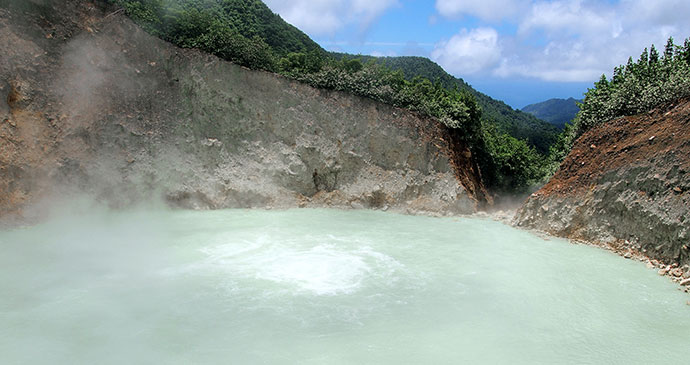
Boiling Lake
The Boiling Lake is an extremely large, deep fumarole. Gases rise from a magma chamber and superheat the ground water, turning it into steam and forcing it up to the surface where it condenses to water and is trapped within a volcanic crater.
The lake is also fed by streams and spills out on its eastern lip to form the White River. This activity is largely consistent but there have been episodes when activity has subsided resulting in no steam being forced to the surface and the lake’s level settling to that of the surrounding water table, thus ‘emptying’ the lake.
The Boiling Lake is actually at a higher level than the surrounding water table thanks to the superheated steam that forces it up, and so when it empties due to rare lulls in volcanic activity, the water is simply finding its natural level. The last time this happened, as the lake was refilling, the water was actually cold and took around two years to get back to normal temperature.
Though Amerindians no doubt came across it earlier, the first recorded sighting of the Boiling Lake was in 1870, when a magistrate from the east-coast village of La Plaine, Mr Edmund Watt, attempted to find an alternative route across the interior of the island. After several days spent in the depths of the forest he finally arrived at the village of Laudat and reported sighting a boiling volcanic crater. Mr Watt was later accompanied by Dr H A A Nicholls and a number of porters and bush cutters to the location of his sighting, along the same route that the main hiking trail follows today. The mountains of Morne Watt and Morne Nicholls bear the names of the two men.
Tropical Storm Erika in August 2015 caused some minor damage to the Boiling Lake. The lip where it spills out to form the White River was reduced in height, resulting in the lake being around 1m lower than before the storm.
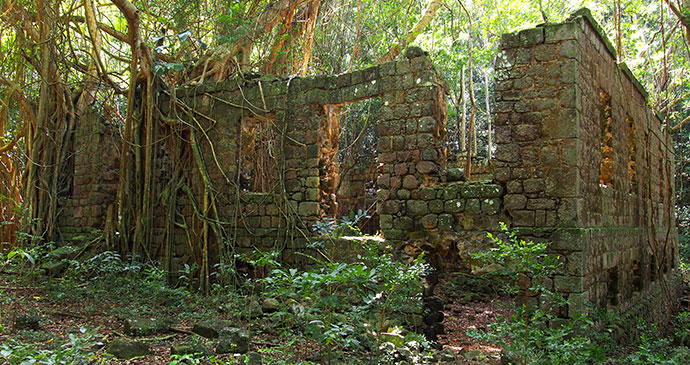
Cabrits National Park
The 525ha Cabrits National Park was established in 1986. The twin peaks of the Cabrits are thought to have been formed from the same volcano that collapsed and eroded over time. East Cabrit is 140m above sea level and West Cabrit stands at a height of 171m. Located within the park, and its most prominent feature, is the ruined 18th-century Fort Shirley garrison.
The park is connected to the mainland by Dominica’s largest wetland, the Cabrits Swamp, and it also includes some 421ha of marine environment. The name ‘Cabrits’ is derived from the French word cabri, meaning ‘young goat’. It is said goats were brought here for food and allowed to roam freely around the headland.
In 1990 the government of Dominica established a cruise ship berth at the Cabrits on the site of the dockyard that would have served Fort Shirley garrison some 200 years before, and it has become the location for two large hotel projects. At the time of writing one of these projects had started and then stopped, the other was simply making the news headlines. Whether either or both are likely to become significant accommodation options or not, only time will tell.
A site pass is required for the Cabrits National Park, which can be purchased at the snackette. The stone archway and path in front of the visitor centre forms the entrance to the park and leads uphill to the restored main garrison and the woodland trails. The trails are very pleasant walks through the forested park and include several interesting garrison ruins. They also have excellent views of the surrounding area.
The Cabrits habitat is dry coastal woodland. Trees found here include teak (Tectona grandis), the silk cotton tree (Ceiba occidentalis), the bay tree (Pimenta racemosa), the naked indian tree (Bursera simaruba), the mahogany (Swietenia mahogani) and the savonnet (Lauchocarpus latifolus). In the grassy area above the Fort Shirley powder magazine you can see Dominica’s national flower, the bwa kwaib (Sabinea carinalis).
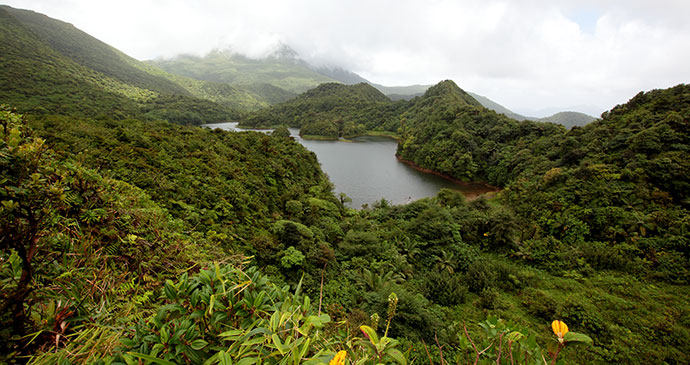
Freshwater Lake
The Freshwater Lake is located in a valley between Morne Micotrin and Morne Nicholls, and from the heights of its perimeter trail you can also see Morne Trois Pitons, Morne Watt, Morne John and Morne Anglais. It has a surface area of approximately 4ha and is at an elevation of 762m above sea level. This area receives some of Dominica’s highest rainfall, almost 900cm a year, making it just about the wettest place on the island. It is often cloaked in cloud and can be subject to strong easterly winds. Sometimes it feels more like Scotland than the Caribbean.
Due to the weather it receives and its location, the area around the lake is a combination of upper montane and cloudforest. The vegetation is fairly low-growing, consisting of ferns, mosses, kaklen (Clusia mangle) and mountain palms. Bromeliads, colourful gingers, heliconias and orchids can also be found growing around the lake trail. Aside from a mythical monster, living in the lake are tilapia, a tropical freshwater fish species belonging to the cichlid family that were introduced some time ago.
Although not blessed with an abundance of clear and sunny days (though when they do come, this place is stunning), the serenity of the Freshwater Lake and the natural beauty of the volcanic peaks and unspoilt environment all around are breathtaking. As they are located so close to each other, it is also a nice idea to combine a hike around the Freshwater Lake with the Boeri Lake, if you have the time and energy.
The Freshwater Lake is located beyond the village of Laudat, and within the Morne Trois Pitons National Park. Please note, public buses will not go beyond Laudat to the lake. You must either pay extra if the driver agrees to go the extra distance, take a taxi, hitch a ride, or walk. The walk from the junction to the lake is about 30–45 minutes along a paved road. It has great views on a clear day though so it’s not that bad! At the visitor centre you can get drinks and good food. You can also rent kayaks.
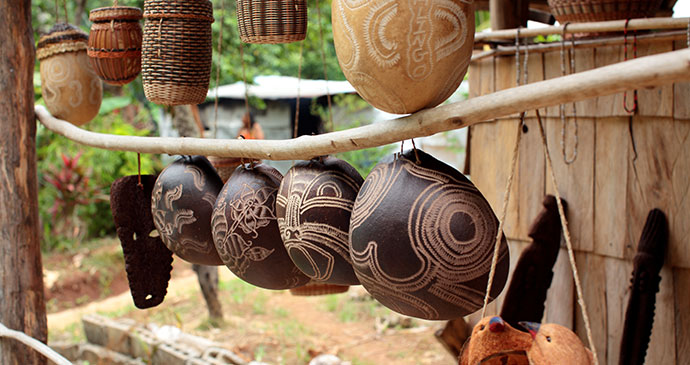
Kalinago Territory
The Kalinago Territory covers 1,530ha on the east coast of Dominica, from the village of Bataca in the north to the village of Sineku in the south. It was established in 1903 by Dominica’s first Crown Colony administrator, Hesketh Bell, who governed Dominica between 1899 and 1905. The Kalinago Territory is administered by the Kalinago Council, which is headed up by the Kalinago Chief. Both council and chief are democratically elected by residents of the villages within the Kalinago Territory every five years. The Kalinago Territory and its people are represented in government by the Ministry of Kalinago Affairs.
By law, the Kalinago Territory is communally owned. No one person can buy or sell part of the territory nor use it as collateral at a bank for a loan. This is often cited by Kalinago as a hindrance to both personal and business development and for this reason some are calling for statutory modifi cations or specific financial allowances to be enacted for Dominica’s indigenous people. Any Kalinago resident may stake a claim to a vacant portion of land, however, and so long as no-one else has already claimed it, and the Kalinago Council approves the claim, then that resident may build a house there and work the land. Any land which has been left untended for more than a year may theoretically be claimed by someone else, subject to approval by the Kalinago Council.
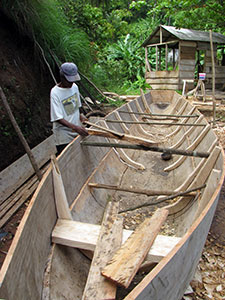
There are eight hamlets within the Kalinago Territory: Bataca, Salybia, Concord, Crayfish River, Mahaut River, St Cyr, Sineku and Gaulette River. In appearance these hamlets resemble any other rural settlements on Dominica, consisting of small houses of wood and concrete, flower gardens and vegetable plots, yet there is perhaps a more visible appearance of poverty here. Along the roadside you will see wooden stalls selling traditional larouma basketwork and various other hand-crafted gifts.
Much of the interior of the territory is uninhabited, stretching from Sineku westwards across a high ridge and up to the banks of the Pagua River in the area of Charles Warner. The administrative centre of the Kalinago Territory is Salybia, which is home to the Kalinago Council and the main police station.
Heading north through Salybia there is a road to the right that goes down to the Salybia Catholic Church, which was built in 1991. Its steeply pitched roof and the anchor poles that are driven deep into the ground are designed to protect the church from hurricanes. Both the exterior and interior have murals depicting Kalinago life and the arrival of Europeans. The church altar is a small hand-carved canoe.
Located in Salybia Bay are two islets referred to as either the Salybia Isles or Petit L’Ilet and Gros L’Illet. According to Kalinago legend, each islet was once a ship that was used to transport the spirits of dead Kalinago out to sea. It is said that on at least one of the islets there is a large steel anchor chain emerging from the rock down to the ocean floor.
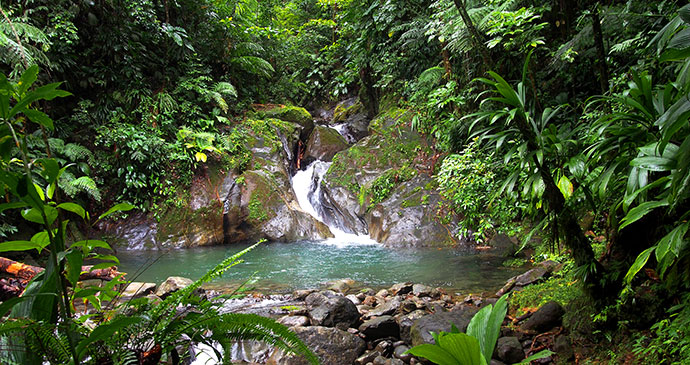
On a high ridge overlooking the hamlet of Bataca and the Pagua River Valley is Pagua Rock. This volcanic rock formation, some 20m in height, is said to be the home of a benevolent spirit and the steps leading up to it were once used by the people of Bataca in search of good fortune, which could be found in the form of charms on the top of the rock itself. According to legend, if you are very lucky, you may find a small white flower that only blooms one day of the year.
If it is in bloom, you should rub it into the palm of your hand and then point your palm at any person you wish to command. Upon calling their name, that person will do as you wish. There is a catch, however. The rock has a number of cracks and if you were ever to catch sight of the spirit living within, you could be sure someone you knew was going to die.
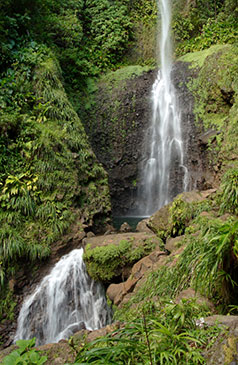
Middleham Falls
When plans were being developed to create the Morne Trois Pitons National Park in the 1970s the then owner of the Middleham Estate, Mr John Archbold, an American millionaire, donated the land in its entirety to the World Wildlife Fund in an effort to encourage the formation of the park.
The estate covered in excess of 400ha and was transferred to the government of Dominica when the national park was created in 1975. The rainforest vegetation in this area includes fine specimens of the buttress-rooted chatanier tree, gommiers, tree ferns, epiphytes and bromeliads. Jaco parrots, one of two endemic Amazonians, also inhabit this region and are frequently heard if not actually sighted.
The main trail to the waterfall actually runs all the way between the villages of Cochrane and Laudat. The most common route used by visitors is the trail from Laudat which is fairly easy and takes around an hour. This route is also part of the Wai’tukubuli National Trail. The trail from Cochrane is less frequently used though it is a little less steep and passes through very undisturbed areas of rainforest.
This route takes a little over an hour and runs past Tou Santi or ‘Stinky Hole’, a fissure full of bats and the stench of their droppings. Both routes require small river and stream crossings (the route from Cochrane more so) and they converge at a junction just above the waterfall. The last section of the trail to the falls is a little steeper, rocky and sometimes quite waterlogged so you have to be careful. The waterfall itself is one of the tallest on the island.
The pool at the bottom is deep and well worth the scramble down for a refreshing dip. This waterfall changes quite noticeably between seasons. When it is dry, the falls are very narrow and the pool extremely tranquil. In the height of the wet season the waterfall is full and thunderous, throwing out vast clouds of spray and making access to the pool almost impossible.
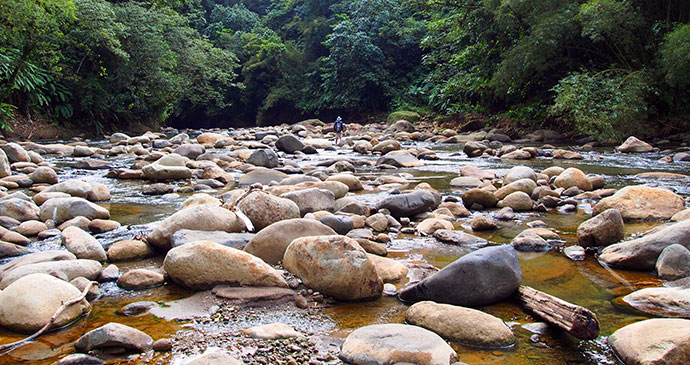
Morne Diablotin National Park
When it was formed in 1977, the Northern Forest Reserve covered 8,900ha of mountains and rainforest. In January 2000 3,335ha were taken from the reserve to form the Morne Diablotin National Park, which was created primarily as a sanctuary to protect the natural habitat of Dominica’s two endemic parrots, in particular its national bird, the sisserou (Amazona imperialis).
Morne Diablotin gets its name from the French name for the black-capped petrel (Pterodroma hasitata), a bird that used to inhabit the cliff faces of the mountain. The name translates to ‘little devil’ and was given because of its apparent demonic sounding call. The petrel typically nests on high cliff faces, burrowing a hole or using natural clefts. Though rarely seen these days, experts believe the bird may be returning to the mountain.
The higher elevations of Morne Diablotin are cloaked in elfin woodland. Lowgrowing kaklen (Clusia mangle) dominates the terrain, growing in a dense, tangled blanket some 2–3m above the ground. The palmiste moutan, or mountain palm (Prestoea montana) pushes its way through the kaklen, together with other lowgrowing trees and ferns. The lower elevations give way to montane forest and then dense swathes of rainforest.
Trees such as the gommier (Dacryodes excelsa) and several species of chatanier (Sloanea dentata, Sloanea caribaea and Sloanea the forest floor. Other trees known locally as the mang blanc, mang wouj, bwa kanno and kwé kwé can also be found in this habitat and have prop roots. The karapit (Amanoa caribaea) produces both buttress and prop roots and is one of the most abundant species of large tree growing in the rainforest.
Within the Morne Diablotin National Park is the Syndicate Nature Trail, one of Dominica’s most popular hiking and birdwatching trails. There is also a tough trail to the 1,447m summit of Morne Diablotin.
The visitor centre was opened in October 2006 and has an interpretation room where visitors can learn about the rainforest habitat, including the trees, animals and birds that may be seen within it. The centre also has toilets and a small shop selling refreshments. Unfortunately it is often closed, catering more to cruise ship tour buses than independent travellers.
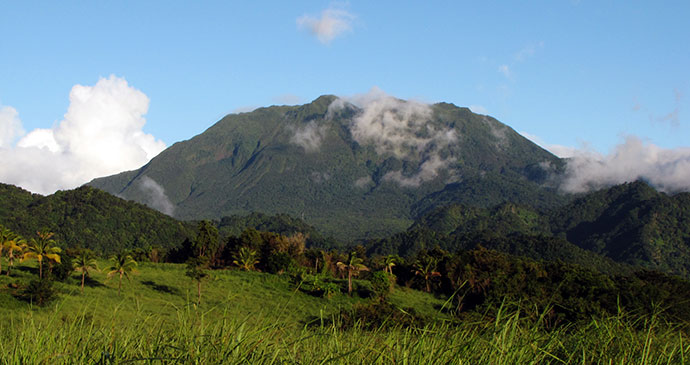 A view of Morne Trois Pitons from below © Paul Crask
A view of Morne Trois Pitons from below © Paul Crask
Morne Trois Pitons
The Morne Trois Pitons National Park was established in 1975, and in 1997 it was designated a UNESCO World Heritage Site. It is approximately 7,000ha in size and contains a high concentration of volcanoes. The park’s vegetation zones include deciduous and semi-deciduous forest, secondary and mature rainforest, montane forest, and elfin woodland at the volcano summits. Volcanic activity can be seen within the park. The Valley of Desolation, one of the island’s active volcanoes, is a fascinating landscape of violently steaming fumaroles, hot-water rivers and cascades, boiling mud and a thin crust of rocks and boulders that have been stained in multi-colours by the chemicals and the gases that are released from the magma chamber below.
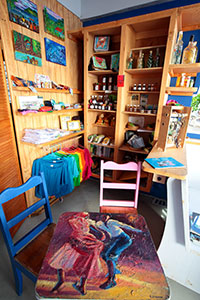
Romance Cafe at Mero Beach is a great option for a cool down after hiking Morne Tros Pitons © Paul Crask
Of the volcanoes within the park boundary it is the dominant three-peaked Morne Trois Pitons itself, at 1,342m that is the highest. From the summit there are spectacular views of lush and dense rainforest all around. To the south are the peaks of Morne Micotrin, Morne Watt and Morne Anglais. To the north is a vast blanket of green covering the area from the Central and Northern Forest Reserves to the distant summit of Morne Diablotin and the Morne Diablotin National Park.
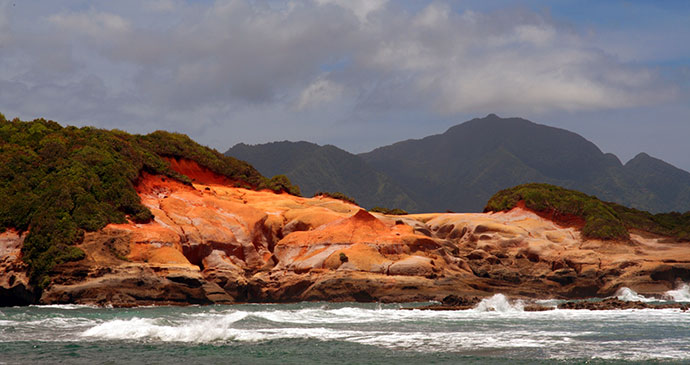 A view of the Red Rocks coastline at Pointe Baptiste © Celia Sorhaindo, Tropical Ties
A view of the Red Rocks coastline at Pointe Baptiste © Celia Sorhaindo, Tropical Ties
Red Rocks at Pointe Baptiste
Pointe Baptiste is located on the northeast coast, a little to the south of Calibishie. It has two areas that are certainly worth visiting. The first is the Red Rocks, a very unusual coastal formation of smooth red earth that has been compacted and shaped by both ocean and weather. As well as the beauty of the formations themselves, you can explore a cave, short trails along the coast to further formations and a black sand beach along the margins of the Pointe Baptiste Estate, and fabulous views back across the bay to Calibishie, Morne Aux Diables and the northern interior. This is a magical spot at dusk when the sun sets behind the mountains.
The second area worth visiting at Pointe Baptiste is the white-sand beach at Pointe Baptiste Bay – it’s a nice place for a bathe and a picnic and if you call in at Pointe Baptiste Estate, you could taste and buy some of the many variations of chocolate that are made there.
Roseau
Roseau is Dominica’s capital and also its major seaport. It is located on the southwest coast of the island at the foot of a broad river valley. The central shopping, administrative and business district of Roseau is to the south of the river, and the residential neighbourhoods of Pottersville, Goodwill and St Aroment are situated to the north.
At the southern edge of the central district is the old French Quarter, where the original European settlement was built (the Kalinago were already here). To its south is the coastal road and the neighbourhoods of Newtown, Citronniere and Castle Comfort.
First impressions of Roseau are generally mixed. For a capital, the town is very small, rather cluttered and often busy; habitually jammed with cars, people and buses. It can be noisy, sometimes rather smelly (open gutters and a propensity for some to urinate anywhere), and it is always very hot and sticky. A lack of proper footpaths and all those open gutters frequently force pedestrians out into the road amongst the traffic. This can make both driving and walking around town quite a precarious and frustrating business. The buildings of Roseau are a seemingly unplanned jumble of the old, the new and the downright ramshackle.
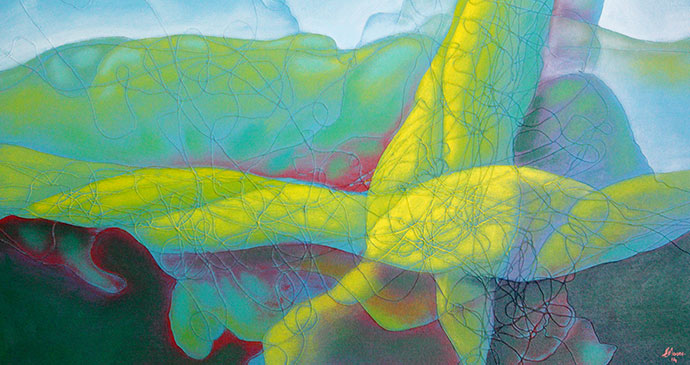
Walk with your head down, dodging vehicles, trying not to fall down through holes in the pavement, dodging an increasing number of beggars, and getting steamy under the collar, and the town can feel ugly and oppressive. Take your time, walk slowly, look up at the jalousie windows, the ornate fretwork verandas and the mountainous backdrop, and it can be a different town altogether. But whatever you make of it, Roseau is really not a place for the traveller to dwell; for the beauty, intrigue and natural attractions of this wonderful Caribbean island lie beyond its diminutive and claustrophobic capital.
Ambitious plans to beautify Roseau and make it more visitor friendly have been talked about for many years and were on the cusp of being implemented before the financial setback of Tropical Storm Erika. The enhancement plans included boardwalks along the Bay Front, river paths, water taxis, pedestrian zones and more green spaces. A main bus terminus has also been suggested, which would help to alleviate traffic in the town as well as simplify things for those who don’t have several years available to spend trying to figure out where on earth to catch a bus.
Whether you love it or hate it, Roseau is inescapably the administrative engine room of the island, the hub and the hubbub, where government, financial institutions, communications and transport services find their nucleus, where merchants trade and where farmers turn up from the countryside to sell their produce. It is also where the majority of visiting cruise ships put in.
The best and most practical way to get around Roseau is on foot, but even that can be a challenge. The town is small and nowhere is very far but a lack of proper footpaths, holes, extended porticoes and open gutters make walking quite troublesome, and it is important to keep a sharp lookout for traffic when you are inevitably forced on to the roads.
Finding your way round the central area is fairly straightforward, as the layout is a grid system with all roads running in a straight line north to south or east to west. In the old French Quarter, the road layout is a little more interesting. Look out for small street signs on corners to help you find your way round.
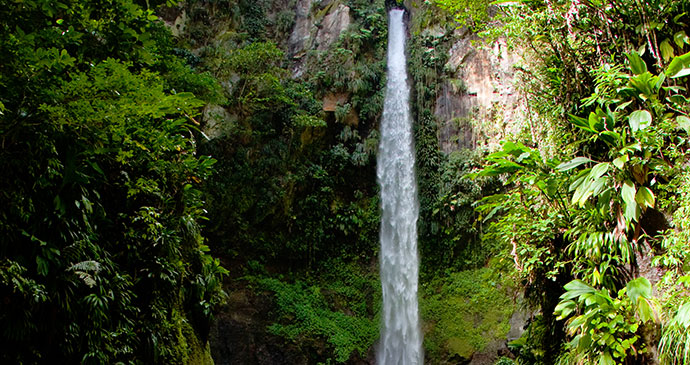 © Paul Crask
© Paul Crask
Sari Sari Falls
This is a very impressive waterfall located on the Sari Sari River behind the east-coast village of La Plaine. The hike to the waterfall is fairly challenging as half of it is in the river itself. You have to negotiate rocks, boulders, cascades and pools. Though it is not especially far, the terrain is difficult, making this a hike for the adventurous. Please do not attempt this hike when it is raining or if there has been recent heavy rain. The Sari Sari River is prone to flash flooding in these
conditions and people have died here.
It is worth noting that due to landslides on the south coast caused by Tropical Storm Erika, La Plaine, is currently only accessible via the east coast and not from the south.
When you reach the river, the easy part of this hike is over. Now you have to make your way upstream along the river bed. Look ahead for cairns (piles of stones) or other similar markings that helpful hikers may have left to show you where to go next. It is challenging, but fun and not too difficult.
Currently, there are no pools directly beneath the waterfall; it has silted up and is full of rocks following Tropical Storm Erika, but the pools before it were deep and refreshing.
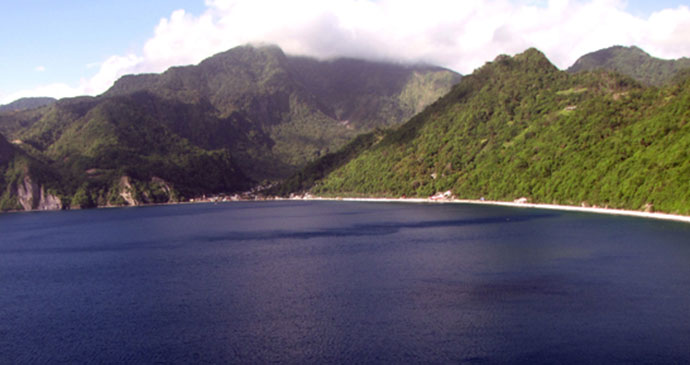 © Paul Crask
© Paul Crask
Soufriere Scotts Head Marine Reserve
The Soufriere Scotts Head Marine Reserve (SSMR) is located in the southwest of Dominica and contains some of the island’s most visited and well-known dive sites. The aim of the reserve is to protect the marine environment at the same time as providing structure and balance to the demands of both tourism and the traditional fishing heritage of the villages in this region. The reserve runs from the isthmus of Cachacrou to the Champagne Reef system south of the coastal community of Pointe Michel, and is comprised of priority zones for fishing, scuba diving and marine nurseries. Within the reserve, dive sites such as L’Abym, La Sorciere, Danglebens Pinnacles and Scotts Head Drop-off provide visiting scuba divers with a spectacular combination of life, colour and dramatic reef formations. The waters here are extremely deep, and the reefs largely bereft of sand, so turbidity is rarely a problem and thus visibility is usually excellent all year round. Scuba diving and snorkelling in the SSMR draws a US$2 fee per snorkeller or scuba diver, which goes towards its management, much in the same way that the site pass system is designed to work for designated ‘eco’ attractions on land.
Trafalgar Falls
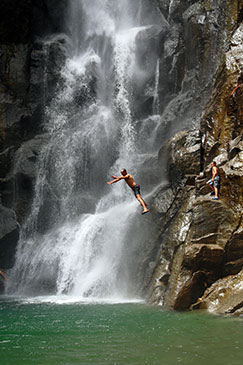
(Photo: Visitors enjoying a break at Trafalgar Falls © Celia Sorhaindo/Tropical Ties)
The Father Falls, with a drop of around 85m, and the Mother Falls, with a drop of around 40m, make up the Trafalgar Falls. As you face them, the Father Falls are on the left-hand side and the Mother Falls on the right. The Father Falls used to cascade down a tall face of smooth rocks alongside a natural hot spring, but in 1996 there was a huge landslide and this unusual hot and cold water cascade was lost. Tropical Storm Erika in August 2015 moved many of the landslide boulders away and so the Father Falls now partially resembles its former state. The waterfall is still quite lovely, however. It has a deep pool and there are warm water pools and springs nearby. The source for the Father Falls is a river that runs from the Freshwater Lake via Ti Tou Gorge in the Morne Trois Pitons National Park.
The Mother Falls are the more accessible of the two waterfalls, though it can still be a very tricky scramble over large and often slippery boulders. Taking its source from the Morne Trois Pitons River (better known locally as the Breakfast River), which is crossed by hikers on the Boiling Lake Trail from Ti Tou Gorge, this thundering waterfall also has a great pool.
The Trafalgar Falls visitor centre has a large car park with souvenir stalls, toilet and changing facilities, snack bar and a display room with examples of flowers and birds that may be seen in the area. It is also the entrance to the waterfall trail and where a forestry officer will ask for site passes. The Trafalgar Falls has a wooden viewing platform just ten minutes or so along an easy trail where you can get photographs of both falls. Th is area is a rainforest habitat and it is possible to see several species of fern, epiphyte and bromeliad. Look out for large land crabs scrambling for cover as you pass. Certified guides can be hired at the visitor centre to escort you either along the trail to the viewing platform or all the way to the foot of the falls.
Related books
For more information, see our guide to Dominica:
Related articles
From boiling lakes to vast alpine bodies of water, these are our favourite lakes from around the world.
The hurricane’s devastating presence can still be felt in the island’s flourishing art scene.
Unsure how to spend your time on Dominica? Don’t miss out on these activities!
With its swathes of undisturbed rainforest and clusters of active volcanoes, Dominica is a haven of natural beauty.
If buried treasure still exists, perhaps the Kalinago myth of Spanish bounty in east Dominica is true…
Your bucket list is about to get a whole lot longer.
Fancy trekking the magnificent Wai’tukubuli National Trail, but short on time? Author Paul Crask’s picks out the best bits.
